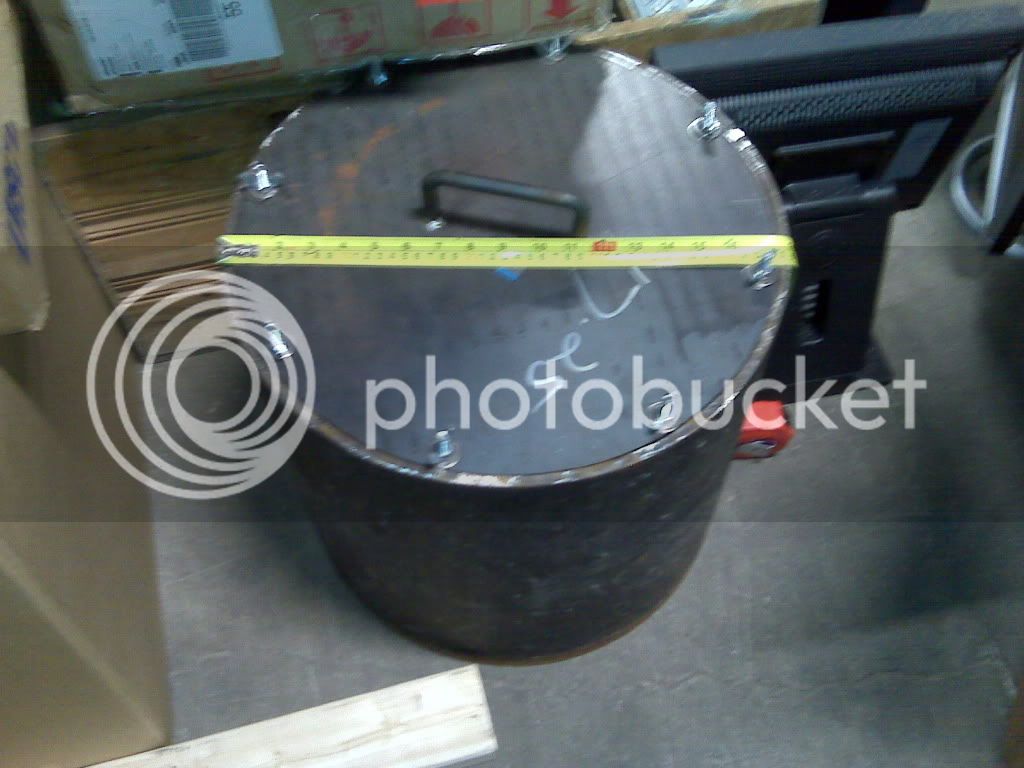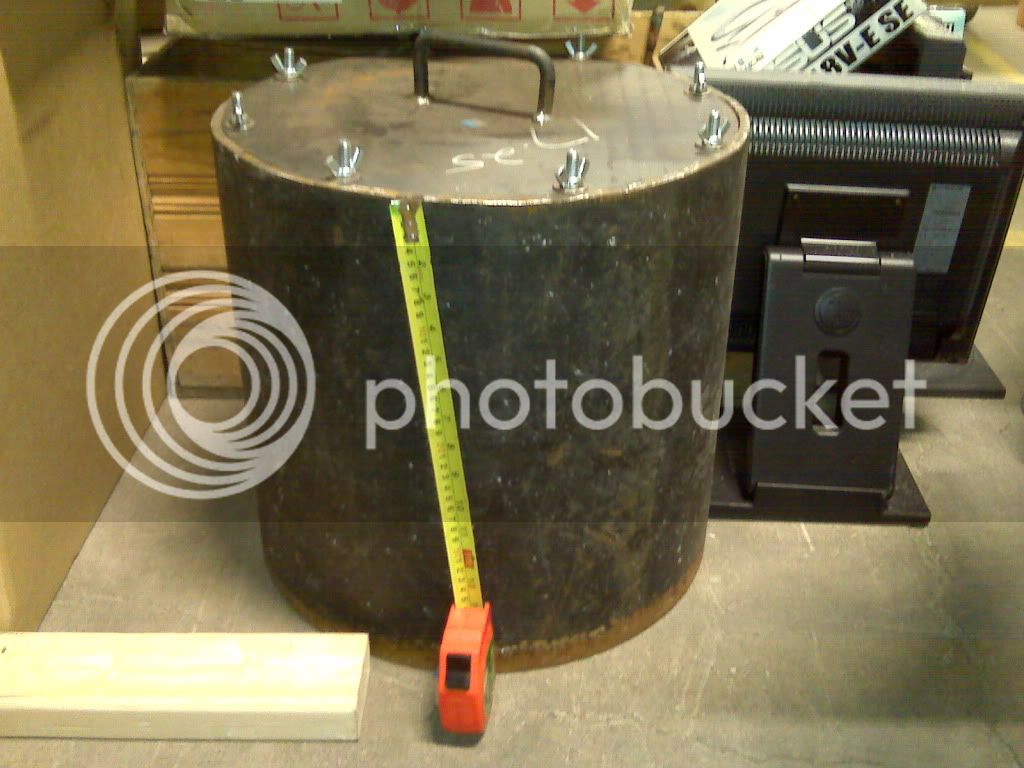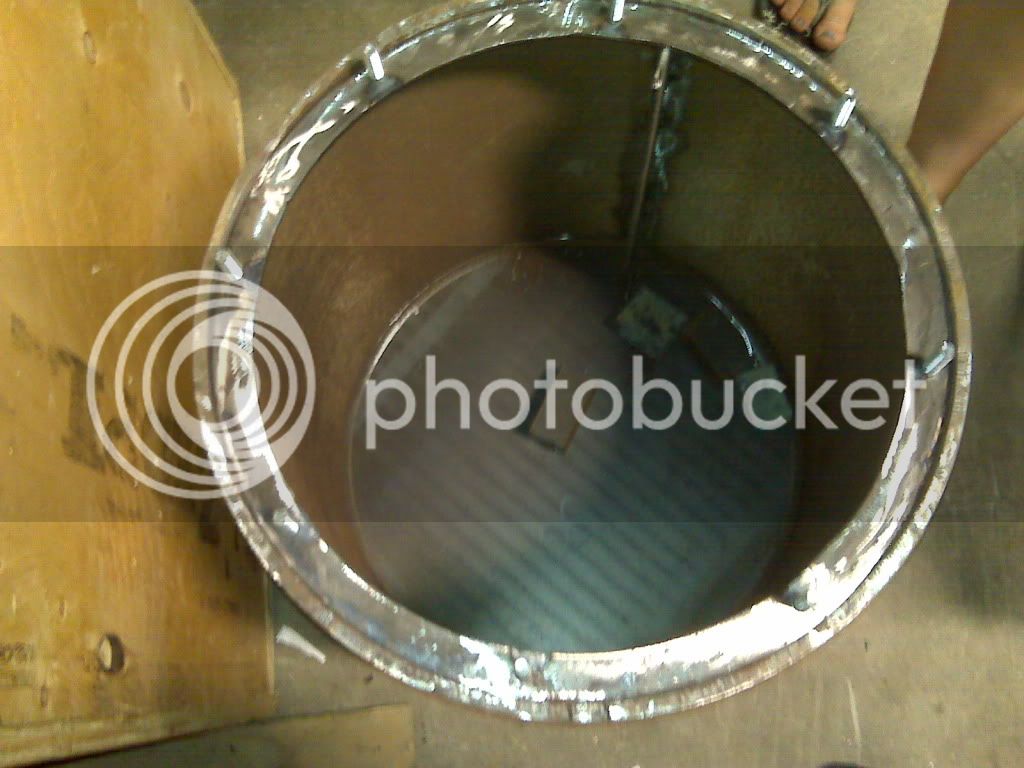-
Please join our new sister site dedicated to discussion of gold, silver, platinum, copper and palladium bar, coin, jewelry collecting/investing/storing/selling/buying. It would be greatly appreciated if you joined and help add a few new topics for new people to engage in.
Bullion.Forum
You are using an out of date browser. It may not display this or other websites correctly.
You should upgrade or use an alternative browser.
You should upgrade or use an alternative browser.
my unfinished ball mill
- Thread starter glondor
- Start date

Help Support Gold Refining Forum:
This site may earn a commission from merchant affiliate
links, including eBay, Amazon, and others.
Cody Reeder
Well-known member
nice 
I built a ball mill a while back and I have been thinking of posting a thread to show it off but I think I will go take some photos right now and I may as well post them on this thread.
maybe I could give you some Ideas.
I built a ball mill a while back and I have been thinking of posting a thread to show it off but I think I will go take some photos right now and I may as well post them on this thread.
maybe I could give you some Ideas.
Cody Reeder
Well-known member
Cody Reeder
Well-known member
rusty
Well-known member
- Joined
- Sep 15, 2010
- Messages
- 1,782
Nice job Cody Reeder with such simplicity shown in your mill design there is no reason why other forum members should be with out a ball mill.
Could you give the drum diameter and motor RPM plus the v pulley size used on the motor, this would be of a great help to others contemplating a ball mill.
Did you salvage the steel plate to make the drum, angle iron for the stand, bearings, motor, total cost to built and time in hours.
Regards
Rusty
Could you give the drum diameter and motor RPM plus the v pulley size used on the motor, this would be of a great help to others contemplating a ball mill.
Did you salvage the steel plate to make the drum, angle iron for the stand, bearings, motor, total cost to built and time in hours.
Regards
Rusty

$85.86
$171.00
Catalysis in the Refining of Fischer-Tropsch Syncrude (Catalysis Series, Volume 4)
Basi6 International

$81.58
$115.00
Petroleum Refining: Technology, Economics, and Markets, Sixth Edition
Woodville Books

$23.99 ($3.43 / Count)
WORKPRO 7-Piece Jewelers Pliers Set, Jewelry Making Tools Kit with Easy Carrying Pouch (Blue)
GreatStar Tools
Cody Reeder
Well-known member
rusty said:Nice job Cody Reeder with such simplicity shown in your mill design there is no reason why other forum members should be with out a ball mill.
Could you give the drum diameter and motor RPM plus the v pulley size used on the motor, this would be of a great help to others contemplating a ball mill.
Did you salvage the steel palte to make the drum, angle iron for the stand, bearings, motor, total cost to built and time in hours.
Regards
Rusty
Thanks
the drum is about 1 ft in diamiter and 2 ft long and I got it so it turns about 60 RPM. the bungy cord (made into a belt) runs around the shaft of the motor which is an old washing macheen motor. (could be better but still works)
the mill is 100% salvaged material (other than the welding wire of coarse) even the berings are idler pullys off of a scrap car. I originaly wanted to use pipe but I didnt have any big enugh so I made my own from 6in strap and I think it works better that way.
I proably spent 7-8 hours from start to finish, spred out over 3 days.
its entierly my design so no making mony off my plans ok :lol:
trashmaster
Well-known member
Simple and to the point .  SWEET :lol: :lol:
SWEET :lol: :lol:
Thanks
Thanks
rusty
Well-known member
- Joined
- Sep 15, 2010
- Messages
- 1,782
kurt said:Cool stuff guys - I used to be involved in both hard rock & placer minning about 20 years ago when I lived out in Northern California. --- What are you guys using for balls & were are you getting them?
Kurt
Get an axle from a large 3 tone truck then cut into short chunks with your chop saw, be sure to round off the sharp edges so your not going to cut your fingers. Eventually these corners will round themselves up inside the mill.
Looks like Cody Reeder is using some cam rollers from an air brake system for milling balls along with some real mill balls
Regards
Rusty
Cody Reeder
Well-known member
I have been colecting bits of metal to use as balls for quite a while and a friend of mine gave me the real mill balls.
I have knoticed that it works better if you use a variety of ball scizes rather than all one scize.
it is a verry usefull tool and so worth building. one thing I would do diffrent is make the spindles shorter becouse they break off every couple weeks. and it is so loud that I am glad I dont have nabors. your mill with the smooth sides will proably not make as mush noise but grind slower too.
I have knoticed that it works better if you use a variety of ball scizes rather than all one scize.
it is a verry usefull tool and so worth building. one thing I would do diffrent is make the spindles shorter becouse they break off every couple weeks. and it is so loud that I am glad I dont have nabors. your mill with the smooth sides will proably not make as mush noise but grind slower too.
- Joined
- Feb 25, 2007
- Messages
- 8,360
Part of that is due to the hexagonal shape of your drum. Not being critical of your mill, mind you, but commenting that you'd have much better luck if the drum was a cylinder, so there weren't corners in which material could escape the required hammering. Given ideal conditions, your mill will take longer to accomplish a given amount of work, because the material can avoid being hit by the balls.Cody Reeder said:I have knoticed that it works better if you use a variety of ball scizes rather than all one scize.
Yep! The support should be direcly adjacent to the weld, with little or no space between. Right now, they're flexing and failing from fatigue. If you want to keep the existing construction, add some gussets between the side plates and the shafts, so they are very near the bearings. That should limit flexing and make the shafts quit breaking.it is a verry usefull tool and so worth building. one thing I would do diffrent is make the spindles shorter becouse they break off every couple weeks.
The noise is very much the function of a properly grinding mill---which means that you operate at a speed that carries the balls near the apex of the top curve, then drops them. It's the dropping of the balls that does all the work (properly, anyway---you can grind by attrition, but that's not recommended, and is much slower). There's a formula for calculating proper rotational speed, so the balls behave as they should. Sorry, can't provide the source---I found it in an old mining journal---or it may have been in Sir T.K. Rose's book, The Metallurgy of Gold. At any rate, rotational speed is critical if you expect proper performance from a ball mill. Any speed will yield results of sorts, however, unless it's too fast and carries the balls without dropping or rolling.and it is so loud that I am glad I dont have nabors. your mill with the smooth sides will proably not make as mush noise but grind slower too.
Harold
Nice work guys!
I have been building me a ball mill in my head for over a year now. Hope to someday soon ( thanks to your inspiring photos ) find the time to go through with it.
The one thing that I haven't quite figured out yet, is how to come up with a seal for the lid. I think I'm leaning towards an o-ring imbedded into the end of the drum or the lid.
The problem for me is to find someone that can flycut the groove for the O-ring, and to even find me an O-ring big enough. My drum will be 18-24" diameter, what ever I can readily find.
So how do you guys seal your lids? Are you liquid / dust tight ? or is that even a concern?
glondor :
I like that lid recessed like that, but now I need a picture with the lid off to show how you did the hardware for the lid. Is their a gasket in there?
Cody Reeder :
I like that clever use of the bungy strap. Never seen a bungy used like that, who would of ever thought. Try some of those same straps around the outside of the drum to kill some of the noise, or maybe some bicycle inner tubes stretched over the drum like you would a rubber band over a newspaper.
I know I'll be watching this thread, so keep us updated.
Thanks
Ray
I have been building me a ball mill in my head for over a year now. Hope to someday soon ( thanks to your inspiring photos ) find the time to go through with it.
The one thing that I haven't quite figured out yet, is how to come up with a seal for the lid. I think I'm leaning towards an o-ring imbedded into the end of the drum or the lid.
The problem for me is to find someone that can flycut the groove for the O-ring, and to even find me an O-ring big enough. My drum will be 18-24" diameter, what ever I can readily find.
So how do you guys seal your lids? Are you liquid / dust tight ? or is that even a concern?
glondor :
I like that lid recessed like that, but now I need a picture with the lid off to show how you did the hardware for the lid. Is their a gasket in there?
Cody Reeder :
I like that clever use of the bungy strap. Never seen a bungy used like that, who would of ever thought. Try some of those same straps around the outside of the drum to kill some of the noise, or maybe some bicycle inner tubes stretched over the drum like you would a rubber band over a newspaper.
I know I'll be watching this thread, so keep us updated.
Thanks
Ray
Yes - having a variety of different size balls in your mill is important -large balls to really "brake" stuff up, medium balls to brake/crush & small balls to fill in the spaces between large & medium to make actual crushing effective.
Kurt
Kurt
Cody Reeder
Well-known member
Sodbuster said:Nice work guys!
I have been building me a ball mill in my head for over a year now. Hope to someday soon ( thanks to your inspiring photos ) find the time to go through with it.
The one thing that I haven't quite figured out yet, is how to come up with a seal for the lid. I think I'm leaning towards an o-ring imbedded into the end of the drum or the lid.
The problem for me is to find someone that can flycut the groove for the O-ring, and to even find me an O-ring big enough. My drum will be 18-24" diameter, what ever I can readily find.
So how do you guys seal your lids? Are you liquid / dust tight ? or is that even a concern?
glondor :
I like that lid recessed like that, but now I need a picture with the lid off to show how you did the hardware for the lid. Is their a gasket in there?
Cody Reeder :
I like that clever use of the bungy strap. Never seen a bungy used like that, who would of ever thought. Try some of those same straps around the outside of the drum to kill some of the noise, or maybe some bicycle inner tubes stretched over the drum like you would a rubber band over a newspaper.
I know I'll be watching this thread, so keep us updated.
Thanks
Ray
I just glued in a peice of rubber sheet on the inside of the lid to serve as the gasket, very simple it holds back the dust but is not quite water tight. (unless I crank doun on the bolts realy hard)
I thought about wrapping a cloth around it to help with the noise but I havent gotten around to it yet( at least it gives me a reason to leave it alown)
Barren Realms 007
In Remembrance
Cody Reeder said:Sodbuster said:Nice work guys!
I have been building me a ball mill in my head for over a year now. Hope to someday soon ( thanks to your inspiring photos ) find the time to go through with it.
The one thing that I haven't quite figured out yet, is how to come up with a seal for the lid. I think I'm leaning towards an o-ring imbedded into the end of the drum or the lid.
The problem for me is to find someone that can flycut the groove for the O-ring, and to even find me an O-ring big enough. My drum will be 18-24" diameter, what ever I can readily find.
So how do you guys seal your lids? Are you liquid / dust tight ? or is that even a concern?
glondor :
I like that lid recessed like that, but now I need a picture with the lid off to show how you did the hardware for the lid. Is their a gasket in there?
Cody Reeder :
I like that clever use of the bungy strap. Never seen a bungy used like that, who would of ever thought. Try some of those same straps around the outside of the drum to kill some of the noise, or maybe some bicycle inner tubes stretched over the drum like you would a rubber band over a newspaper.
I know I'll be watching this thread, so keep us updated.
Thanks
Ray
I just glued in a peice of rubber sheet on the inside of the lid to serve as the gasket, very simple it holds back the dust but is not quite water tight. (unless I crank doun on the bolts realy hard)
I thought about wrapping a cloth around it to help with the noise but I havent gotten around to it yet( at least it gives me a reason to leave it alown)
Cody, what is the RPM on the motor you are using?



















































